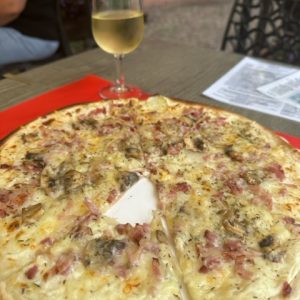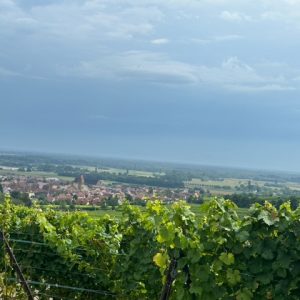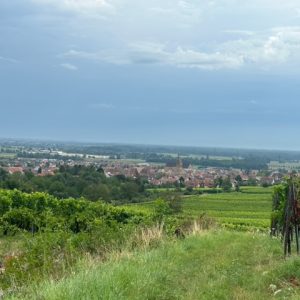Eguisheim, Alsace
Eguisheim has been a member of the club of the “most beautiful villages in France” since 2003, and was voted “favorite town of the French in 2013”. And yet I had never visited Eguisheim until yesterday.
Eguisheim is just 7 km south of Colmar, on Route des Vins (wine trail) in Alsace – France’s very Germanic style province bordering Germany in the north-east of the country. The French and the German spent a very long time fighting over Alsace, with it being restored to France after World War 2.
Like everywhere in France, Eguisheim is bubbling with history. Archeological finds testify to human presence in the area as early as the Paleolithic age. In early historic times it was inhabited by the Gaul tribe of the Senones. Then the Romans conquered the village and developed the cultivation of wine.
In the year 720, Count Eberhard, nephew of Saint Odile, patron saint of Alsace, built his castle in Eguisheim. In 1002, this same castle saw the birth of Brunon d’Eguisheim, future Pope Saint Leo IX, whose statue stands in the centre of the square that bears his name.
The walled city of Eguisheim spreads out in concentric circles and is wonderful to walk around, as I did, following the cobblestone streets. The most striking feature are the Alsatian half-timbered houses with bright colours whose window sills are richly decorated with flowers.
Just to the west of Eguisheim are the Vosges mountains. Walking out of town leads into spectacularly beautiful vineyards that climb up the hills. Indeed, Eguisheim is the perfect spot for wine walking. The views both up to the Vosges mountains and down to the town are very beautiful.
A wide range of grapes are planted in Eguisheim – sylvaner, pinot blanc, muscat, pinot gris, gewurztraminer, riesling and pinot noir. Eguisheim’s wines are very highly rated. And the riesling that I tried over lunch was excellent.
After my gallop up through the vineyards, I had a healthy appetite. What better way to restore my forces than with some “tarte flambée” (flammekueche in Alsatian, “flame pie” in English). This is a traditional recipe of Alsatian cuisine whose invention is attributed to the peasants of Kochersberg, in the north of Alsace. This dish then spread to the adjacent regions of German-speaking Moselle, Baden and the Palatinate.
To the naked eye, tarte flambée seems like an Alsatian pizza. And indeed, it is made up of dough, cheese, and toppings. But tarte flambée is distinctive. It is made up of a thin layer of bread dough covered with thick crème fraîche or fromage blanc, onions and bacon. Beyond that there are multiple variations. I took a forestière, meaning with mushrooms. Tarte flambée is traditionally cooked in a very hot wood oven, preferably over flames.





